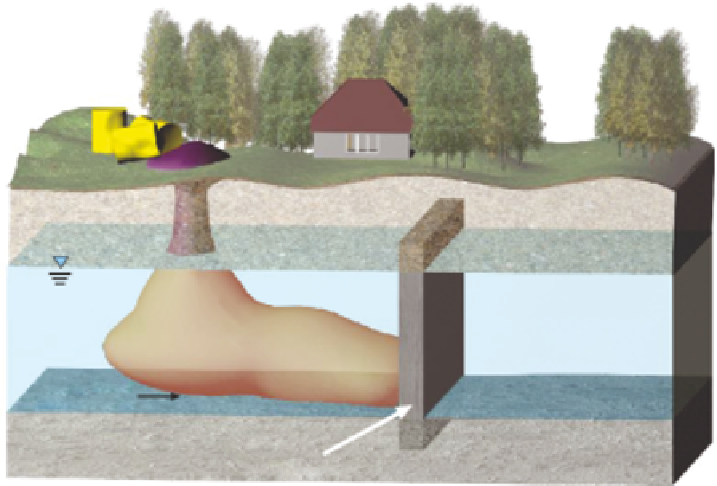Environmental Engineering Reference
In-Depth Information
13.1 Introduction
Permeable reactive barriers (PRBs) are an important component of estab-
lished technologies for the remediation of contaminated groundwater. Since
the first field-scale PRB was built in Sunnyvale, California in 1994-1995,
more than 200 PRB systems have been installed worldwide (Gavaskar et al.,
2000, 2002; Birke et al., 2003; Parbs and Birke, 2005; Birke and Parbs, 2006;
ITRC, 2011; Bone, 2012; Burmeier et al., 2006; Birke and Burmeier, 2012a,b; see
Chapter 2).
As discussed in Chapter 2, a PRB treats pollutants downstream from the
source zone of the contamination (“hot spot”), which may be spread over a
wide area or not accurately located (Figure 13.1). However, it is important
to know the total contaminant mass in the source area and its approximate
geometry to assess the operational features and lifetime of a PRB relatively
accurately.
A PRB divides a polluted area into two sections, that is, it cuts off a con-
taminated groundwater plume from areas downgradient the barrier that
have to be protected: a contaminated upstream segment and a remediated
or noncontaminated downstream segment (Figure 13.1). The upper section
contains the source of the contamination and the discharging contaminated
Cleaned
groundwater
Plume
Groundwater
flow direction
Permeable
reactive barrier (PRB)
FIGURE 13.1
Fundamental principle of a PRB.


Search WWH ::

Custom Search